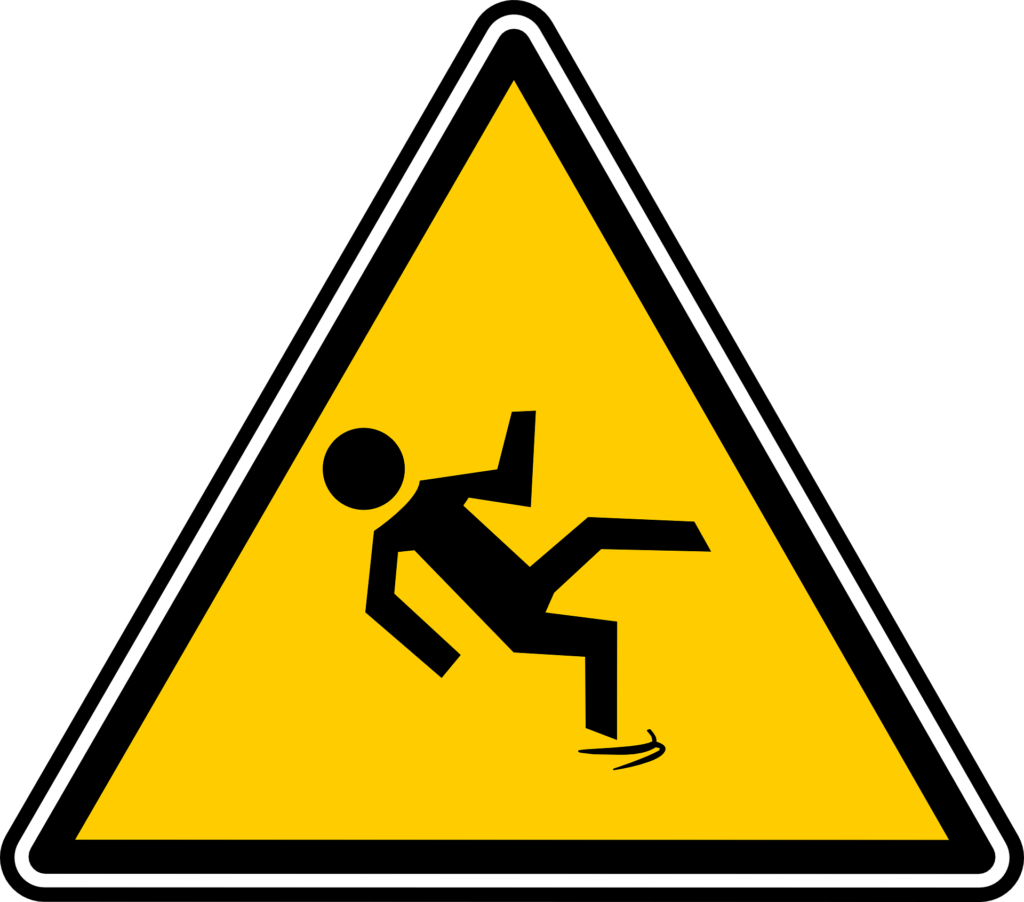Experiencing a workplace accident can be a traumatic and life-altering event. However, it is crucial to focus on recovery and rebuilding your life following such an incident. This article provides practical guidance and valuable insights on how to rebound after a workplace accident. By understanding your rights, seeking appropriate support, and adopting a proactive mindset, you can navigate the challenges and pave the way for a successful recovery.
Understanding You Rights and Responsibilities
When you experience a workplace accident, it’s important to understand your rights and responsibilities as an employee. By being aware of the legal framework and regulations in place, you can better advocate for yourself and ensure that your rights are protected. Here are key points to consider:
- Know your legal rights: Familiarize yourself with the labor laws and regulations specific to your jurisdiction. These laws vary by country and state, but they generally cover areas such as workers’ compensation, workplace safety, and employer responsibilities. Understanding your rights empowers you to take appropriate action and seek the necessary support.
- Workers’ compensation: Workers’ compensation laws provide benefits to employees who are injured or become ill as a result of their work. These benefits typically cover medical expenses, lost wages, rehabilitation, and disability compensation. It is crucial to be aware of the workers’ compensation process and the steps involved in filing a claim.
- Employer responsibilities: Employers have a legal obligation to provide a safe working environment for their employees. This includes implementing safety protocols, maintaining equipment and machinery, and providing proper training. If your accident was a result of negligence or safety violations on the part of your employer, it may impact your rights and entitlements.
- Reporting the accident: As soon as the accident occurs, report it to your supervisor or employer following the company’s established procedures. Timely reporting is essential to document the incident and ensure that appropriate measures are taken to prevent further accidents.
- Preserving evidence: Keep a record of all relevant details related to the accident, such as the date, time, location, witnesses, and any contributing factors. Take photographs of the accident scene, if possible. This evidence can support your claim and help establish liability, if necessary.
- Seeking legal advice: In some cases, it may be beneficial to consult with a workers’ compensation They can provide guidance on your rights, assess the strength of your claim, and represent your interests throughout the process. Legal professionals can also ensure that you receive the full benefits and compensation you are entitled to.
Remember, understanding your rights and responsibilities is crucial in protecting your interests and navigating the aftermath of a workplace accident. By being informed and proactive, you can take the necessary steps to seek compensation, support, and ultimately rebuild your life after the incident.
Seeking Medical and Emotional Support
Following a workplace accident, prioritizing your physical and emotional well-being is essential. Seeking appropriate medical and emotional support is crucial for your recovery and overall well-being. Consider the following steps:
- Immediate medical attention: If you are injured in a workplace accident, it’s important to seek immediate medical attention, even for seemingly minor injuries. Prompt medical care can prevent further complications and ensure proper documentation of your injuries. Contact emergency services or visit a healthcare professional to receive a thorough evaluation and necessary treatment.
- Rehabilitation and therapy services: Depending on the nature of your injuries, you may require rehabilitation and therapy services to aid your recovery. Physical therapy can help you regain strength, mobility, and functionality, while occupational therapy can assist in adapting to any limitations and resuming daily activities. Consult with healthcare professionals to determine the most suitable therapy options for your specific needs.
- Mental health support: Workplace accidents can have a significant emotional impact. It’s essential to address any psychological distress or trauma you may experience. Consider reaching out to a mental health professional or counselor who specializes in trauma or workplace-related issues. They can provide a safe space for you to process your emotions, develop coping strategies, and support your mental well-being throughout the recovery process.
- Seek support from loved ones: Don’t underestimate the power of a strong support network! Reach out to friends, family members, and loved ones to share your experiences and seek their emotional support. They can provide encouragement, lend a listening ear, and help alleviate feelings of isolation during your recovery journey.
- Self-care and stress management: Practicing self-care techniques is crucial for your physical and emotional well-being. Engage in activities that promote relaxation and stress reduction, such as meditation, exercise, hobbies, or spending time in nature. Prioritize proper sleep, nutrition, and hydration to support your overall recovery process.
Remember, seeking medical and emotional support is not a sign of weakness but a crucial step towards healing and regaining control over your life after a workplace accident. By accessing appropriate healthcare services, therapy, and relying on a supportive network, you can accelerate your recovery and move forward with confidence.
Navigate the Workers’ Compensation Process
After a workplace accident, navigating the workers’ compensation process is vital to ensure you receive the benefits and support you are entitled to. Understanding the steps involved and gathering the necessary documentation will help you navigate the process effectively. Consider the following guidelines:
- Report the accident promptly: As mentioned earlier, it is crucial to report the accident to your employer or supervisor as soon as possible. Follow your company’s established procedures for reporting workplace incidents. Reporting promptly helps ensure that the incident is properly documented and sets the process in motion.
- Understand your employer’s workers’ compensation policy: Familiarize yourself with your employer’s workers’ compensation policy and procedures. This includes understanding the timeframe within which you need to file a claim, the forms required, and any specific guidelines or protocols. Request a copy of the policy from your human resources department if you haven’t received one already.
- Gather necessary documentation: Collect all relevant documents to support your claim. This may include medical reports, hospital records, diagnostic test results, witness statements, accident reports, and any other evidence related to the incident and your injuries. Organize these documents in a secure and easily accessible manner.
- File a workers’ compensation claim: Initiate the workers’ compensation claim process according to the guidelines provided by your employer or workers’ compensation board. Complete the necessary claim forms accurately and include all the relevant information. Attach the supporting documents you gathered to strengthen your claim.
- Cooperate with the claims administrator: Once your claim is filed, cooperate with the claims administrator assigned to your case. They may require additional information, documentation, or may schedule a medical evaluation. Respond promptly and provide the requested information to ensure a smooth claims process.
- Follow up on your claim: Stay proactive and follow up on the status of your workers’ compensation claim. Keep records of all communication with the claims administrator, including dates, names, and the content of the discussions. This will help you track the progress of your claim and address any potential issues promptly.
Remember, the workers’ compensation process can vary depending on your jurisdiction and the specific circumstances of your case. It’s essential to familiarize yourself with the relevant laws and regulations and seek guidance from professionals to ensure your rights are protected and you receive the full benefits you deserve.
Developing a Personal Recovery Plan
Recovering from a workplace accident requires a thoughtful and comprehensive approach. Developing a personal recovery plan will help you set realistic goals, prioritize your well-being, and navigate the challenges you may encounter along the way. Consider the following steps to create an effective recovery plan:
- Assess your physical and emotional needs: Begin by assessing your physical and emotional condition post-accident. Consult with healthcare professionals to understand the extent of your injuries, any necessary treatments or therapies, and the expected timeline for recovery. Take into account any emotional or psychological impact you may be experiencing and consider seeking professional help, if needed.
- Set realistic goals: Establish realistic goals for your recovery journey. These goals can be both short-term and long-term. Break them down into manageable steps that align with your abilities and the recommendations of your healthcare professionals. Setting achievable goals will provide you with a sense of progress and motivation throughout your recovery.
- Engage in physical therapy and rehabilitation: If recommended by your healthcare team, actively participate in physical therapy and rehabilitation programs. These treatments are designed to improve your physical function, mobility, and strength. Follow the prescribed exercises and treatment plans diligently to maximize your recovery potential.
- Maintain open communication with healthcare providers: Regularly communicate with your healthcare providers to discuss your progress, address any concerns, and make necessary adjustments to your treatment plan. Be proactive in asking questions and seeking clarifications regarding your recovery process.
- Practice self-care: Prioritize self-care activities that promote your overall well-being. This may include maintaining a balanced and nutritious diet, getting sufficient sleep, practicing relaxation techniques, and engaging in activities that bring you joy and fulfillment. Taking care of yourself holistically will contribute to your physical and emotional recovery.
- Stay positive and resilient: Recovery is a journey that may have ups and downs. It’s important to maintain a positive mindset and cultivate resilience. Acknowledge your progress, celebrate achievements, and stay motivated by focusing on the improvements you’re making, no matter how small they may seem.
Remember, everyone’s recovery journey is unique, and your personal recovery plan should be tailored to your specific needs and circumstances. By setting realistic goals, engaging in appropriate therapies, building a support network, and practicing self-care, you can lay a solid foundation for a successful recovery and regain control over your life after a workplace accident.
Returning To Work and Career Transitions
Returning to work after a workplace accident can be a significant milestone in your recovery journey. However, it’s essential to approach this phase with careful consideration, ensuring your readiness and exploring options for career transition if necessary. Here are key points to consider when navigating the process:
- Consult with healthcare professionals: Before returning to work, consult with your healthcare team to assess your physical and emotional readiness. They can evaluate your progress, provide recommendations, and help determine any necessary workplace accommodations or modifications.
- Communicate with your employer: Initiate open and honest communication with your employer regarding your intention to return to work. Share your recovery progress, any medical restrictions, and discuss potential accommodations that could facilitate a smooth transition back into the workplace.
- Explore workplace accommodations: Work with your employer to identify and implement necessary accommodations to support your safe and successful return. This may include modifications to your workspace, adjustments to your schedule, or providing assistive devices or tools to accommodate any physical limitations.
- Gradual return-to-work plan: Consider implementing a gradual return-to-work plan, if feasible. This involves starting with reduced work hours or modified duties initially and gradually increasing your workload as your strength and confidence improve. This phased approach can help ease the transition and reduce the risk of re-injury.
- Retraining or career transition: If your injuries have significantly impacted your ability to perform your previous job or you wish to pursue a different career path, consider retraining or undergoing additional education to acquire new skills. Research potential industries or occupations that align with your abilities and interests and explore training programs or educational opportunities to facilitate your transition.
- Take care of yourself: Throughout the return-to-work process or career transition, prioritize self-care and manage your physical and emotional well-being. Continue to engage in therapy or counseling, practice stress management techniques, and maintain a healthy work-life balance.
Remember, returning to work after a workplace accident may require patience and flexibility. By communicating openly with your employer, understanding your rights, and exploring available resources and support, you can navigate this phase successfully and create a positive and fulfilling work experience moving forward.
Embracing a Positive Mindset
Maintaining a positive mindset and building resilience are essential components of rebounding after a workplace accident. Embracing these qualities will not only support your recovery but also empower you to overcome challenges and thrive in the face of adversity. Consider the following strategies:
- Acknowledge and accept your emotions: It is normal to experience a range of emotions after a workplace accident, including fear, frustration, or sadness. Acknowledge and accept these emotions as a natural part of the healing process. Allow yourself to grieve for the losses you may have experienced, both physical and emotional.
- Focus on your strengths: Shift your focus to your strengths and capabilities rather than dwelling on limitations or setbacks. Recognize the skills and qualities that have helped you overcome challenges in the past and apply them to your current situation. Cultivate self-belief and confidence in your ability to navigate the recovery process.
- Practice gratitude: Cultivating a sense of gratitude can foster a positive mindset. Each day, identify things you are grateful for, even if they are small. This practice can shift your focus towards the positive aspects of your life and aid in resilience-building.
- Seek inspiration and motivation: Surround yourself with positive and inspiring stories, whether through books, podcasts, or online communities. Learning about others who have successfully rebounded from adversity can provide motivation, hope, and a fresh perspective on your own journey.
- Practice self-compassion: Be kind and compassionate towards yourself as you navigate the recovery process. Accept that setbacks may occur along the way, and treat yourself with the same compassion and understanding you would extend to others facing similar challenges. Practice self-compassion to nurture your resilience and maintain a positive outlook.
- Learn from the experience: View the workplace accident as an opportunity for growth and learning. Reflect on the lessons you’ve gained from the experience and how they can shape your future. Use the insights gained to make positive changes in your life, both personally and professionally.
By embracing a positive mindset, building resilience, and nurturing your well-being, you can not only rebound after a workplace accident but also emerge stronger and more empowered than before. Remember, resilience is a skill that can be developed over time, and with perseverance and self-belief, you can thrive in the face of adversity.
Jennifer Bell is a wellness coach, long-time practitioner of mindfulness, and writer for workers compensation lawyers in Mount Holly. She enjoys helping others be physically and emotionally well.

 image source
image source






